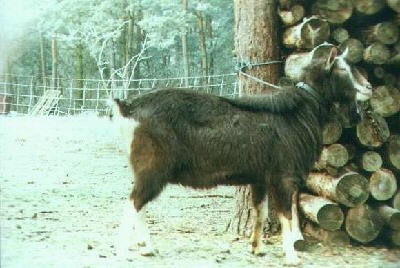Thuringian Goats, a dairy breed native to the verdant landscapes of Thuringia in eastern Germany, trace their lineage back to a blend of Toggenburg, Harzerziege, Rhönziege, and Thüringer Landziege goats crafted with care around the year 1885. Over time, Swiss Toggenburg, Harzerziege, and Rhönziege bloodlines were introduced in the early 1900s, with Swiss Toggenburg making a return in 1988 to further refine the breed.
Adorned in a rich chocolate-brown coat accented by distinctive white markings on their heads and legs, accompanied by a light face mask and a fetching white flash on their rumps, Thuringian Goats present a striking appearance. Whether sporting horns or polled, these goats exhibit a regal stature, with adult males boasting an average weight of 55 kg and females at 48 kg, standing proudly at an average wither height of 78 cm and 74 cm, respectively.
But it's not just their captivating appearance that sets them apart. Thuringian Goats are renowned for their adaptability to the rugged terrain of mountainous regions, where they navigate with ease and grace, covering long distances with their surefooted gait. Despite their remarkable qualities, this esteemed breed teeters on the brink of extinction, making their preservation all the more crucial in preserving the rich tapestry of Germany's agricultural heritage.
